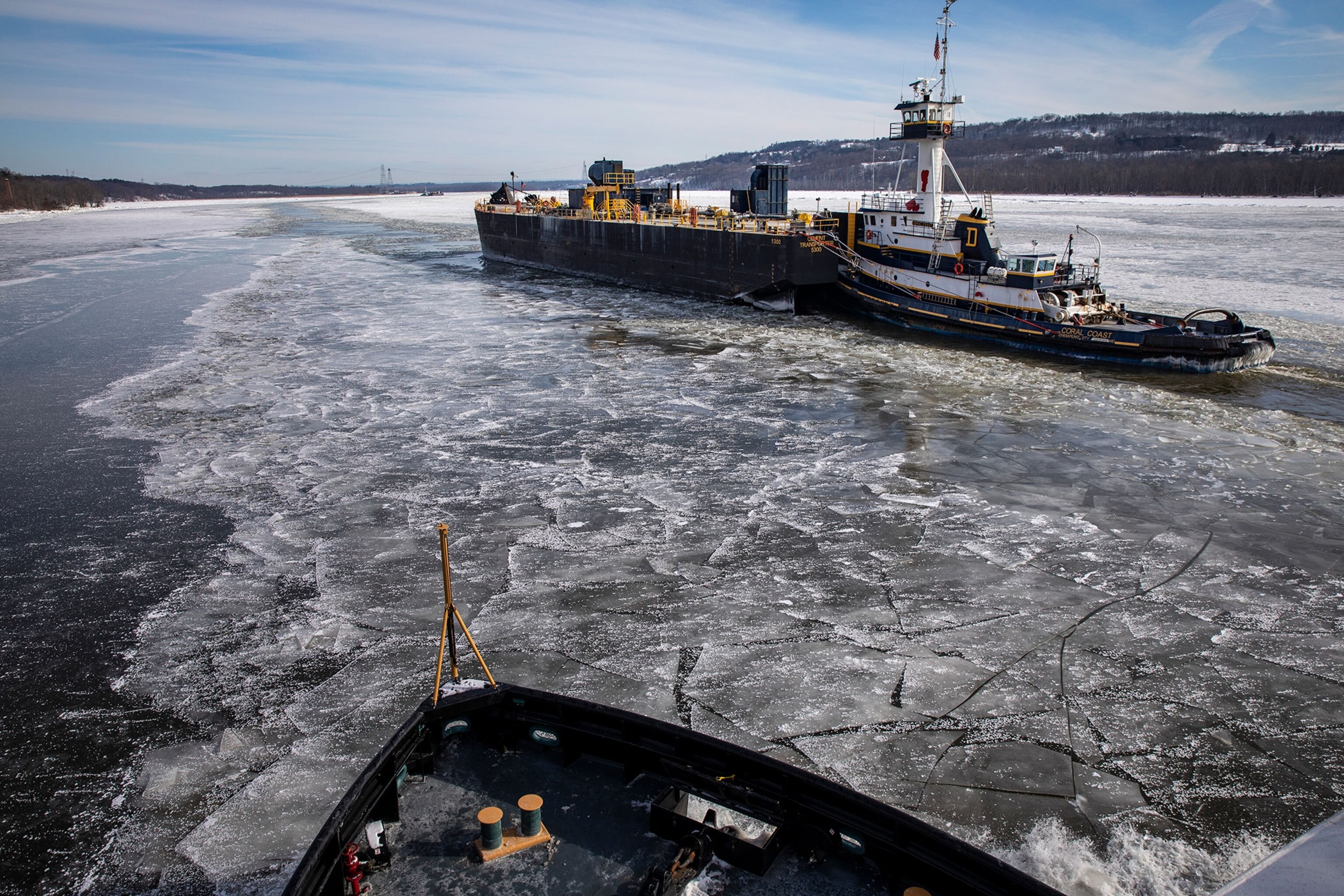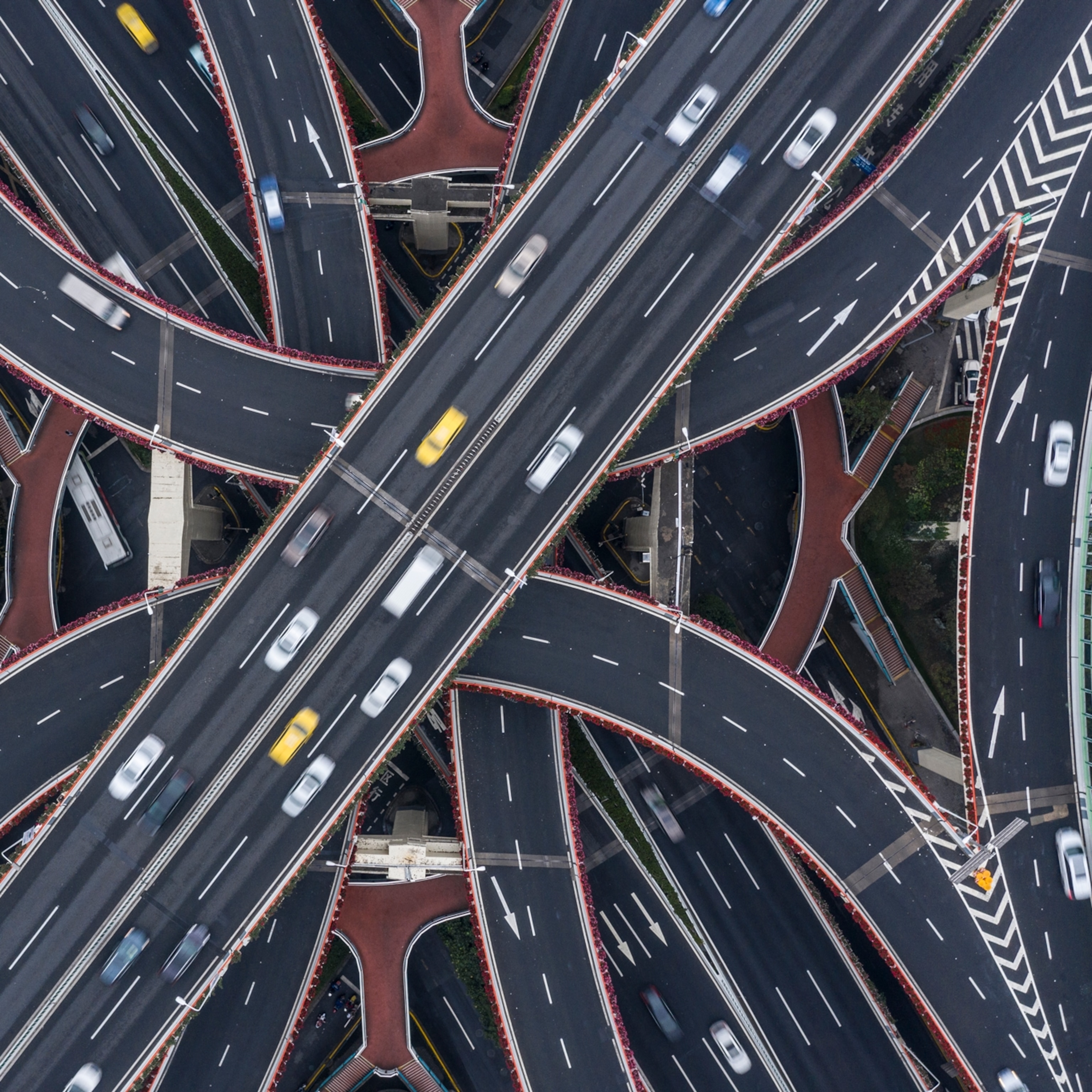
3 tests the Green New Deal must pass to work
Energy systems change slowly, with heating oil still barged through river ice as one example. Yet there are signs of hope in a brash proposal for a “green new deal” on climate change.
As an array of recent surveys have shown, growing and increasingly bipartisan ranks of Americans want the government to act to limit human-driven climate change and help expand renewable energy sources like wind and solar.
But after three decades of incremental steps, with emissions of greenhouse gases rising again in the United States and around the world and impacts increasing, what new approaches can make a difference? How should they be paid for?
The climate conversation is now centered on a proposed “Green New Deal,” a massive federal push to cut emissions driving climate change and boost resilience and job prospects for America’s working class and poor communities.
The idea of a program on the scale of the Depression-era New Deal or wartime mobilization had been building for many years, but was crystallized by the election of 29-year-old Rep. Alexandria Ocasio-Cortez (D-NY) and the release of fresh international and federal reports warning of the need for prompt, deep emissions cuts.
One week ago, joined by a Congressional veteran, 74-year-old Sen. Edward Markey (D-MA), Ocasio-Cortez unveiled a 1,985-word non-binding resolution laying out the audacious strategy and timeline.
The basics are simple enough. The plan calls for overcoming decades of inertia and incremental steps with a huge investment, trillions of dollars over a decade, to deeply cut the nation’s contribution to the planet’s building blanket of heat-trapping greenhouse gases—mainly emissions of carbon dioxide from burning fossil fuels.
The steps range from coordinated technical megaprojects, like modernizing the country’s electrical grid, to massive labor-intensive initiatives, like retrofitting the heating and cooling systems and insulation in millions of homes and industries and deploying vast arrays of solar and wind farms.
The resolution instantly spawned a maelstrom of laudatory or derisive stories, commentaries, and tweets, with confusion amplified when staffers posted statements, later retracted, seeming to exclude options like nuclear power that were not spelled out in the plan itself.
Ocasio-Cortez, Markey, and dozens of other legislators endorsing the plan argue that the up-front cost would pay off in long-term reductions in impacts of fossil-fuel pollution and climate change on health, welfare, and ecosystems, while reshaping the economy to offer new paths to prosperity for those suffering most today.
As National Geographic reported earlier this week, some of the provisions build on past energy and climate resilience projects elsewhere in the world. But most past crash energy programs have been triggered by real-time crises. France shifted rapidly to nuclear energy from an electrical system fueled mostly by oil when producers in the Middle East threatened to cut supplies. The Netherlands became the global leader in managing coastal and flood risk—after a catastrophic inundation in 1953.
So is this a breakthrough, or overreach?
Are there better prospects for more modest initiatives like a bipartisan House bill on energy innovation and a carbon tax returned to citizens?
Step one: examine core documents
Over the years, I’ve developed a three-step approach to assessing the potential impact of climate and energy proposals of all kinds.
First, I have a look at the core documents, testing assumptions and arguments for some backing in data and for their practicality in our diverse, divided country.
In the Green New Deal resolution, there are key words and phrases around which broad consensus can be built, even as debates continue over both timing and technicalities—and even bigger debates about the role of government and how much our generation should invest to limit future risks.
Here are a few:
Mobilization – The Green New Deal’s goals “should be accomplished through a 10-year national mobilization.”
Some coverage and commentary, including by supporters of the plan, implies this is a push that will be done in 10 years. I know of no expert on energy, transportation, or manufacturing systems who sees any chance of any project of this scope being done in that time. The word “mobilization” is a reflection of this being the beginning of a sustained journey to a low-carbon energy future.
Resilience – The plan discusses “building resiliency against climate change-related disasters, such as extreme weather, including by leveraging funding and providing investments for community-defined projects and strategies.”
Through a quarter century of efforts to fight global warming, the focus was almost always on cutting emissions of heat-trapping gases. Many campaigners actively avoided describing the need for parallel investments boosting the adaptive capacity of communities in the face of climate’s hard knocks. Having this phrase at the top of the list of specific actions reflects an encouraging shift in thinking.
“Technologically feasible” – The goals for emissions cuts in the nation’s massive manufacturing, agriculture, and transportation sectors were carefully modified with the phrase “as much as is technologically feasible.”
Some see that as a copout. But energy experts, again, say energy systems are not like emancipation or other social tipping points. Suburbia, for example, sprawled its way over the landscape over more than half a century and can’t be easily uninvented. California’s challenges with cutting the climate impact from transportation, despite the state’s leadership on climate, remain enormous.
The solution in such cases is the “net-zero” approach described in the plan—using carbon-absorbing practices in agriculture and land conservation to remove carbon from the air as much as possible.
Research – The plan promotes “public investments in the research and development of new clean and renewable energy technologies and industries.”
Scientists have warned repeatedly of a decades-long decline in money for basic research in energy sciences and in large-scale testing of systems that private companies will never risk pursuing. But this research gap has rarely been stressed in climate legislation.
Some campaigners have disputed this, saying the need is so urgent that money is best spent on deploying today’s best batteries, panels, turbines and the like—not technological frontiers.
But, again, considering this is a mobilization on a huge problem, experts like Costa Samaras, a Carnegie Mellon University researcher focused on climate policy and technology policy, say it remains vital to push the frontiers of knowledge with more support for basic science.
The effort on energy today is a slim fraction of what it should be, he said.
In the midst of the space race, total federal defense and non-defense R&D was almost 12 percent of the federal budget, compared to about 3 percent today,” he said in an email. “It's impossible to look at the federal R&D budget for clean energy, for climate monitoring, and for resilience, and see any semblance of an appropriately scaled federal response to the grand challenge of climate change.”
Step two: follow reliable guides
To dig deeper, a second step is to weigh the arguments of a variety of trustworthy guides to specialized areas, like David Roberts at Vox on renewable energy, Nathanael Johnson at Grist on the role of nuclear energy, Amy Harder of Axios on energy politics and organizations like World Resources Institute for a policy overview.
More than a few longtime analysts and practitioners immersed in climate policy said they really do see this moment as different—whether or not this particular new deal survives.
For one thing, the proposal is now seen by some on the political right as having enough sticking power to justify some big new counter-proposals—not just more climate naysaying. A column in the conservative Washington Examiner ran under this headline: “Republicans can hate the 'Green New Deal' or they can compete with it.”
“If the goal was to change the conversation and you believe changing the conversation changes actions, it’s already a giant check mark in the win column,” said Karl R. Rábago, the director of the Pace Energy and Climate Center at the Pace Law School in New York. He’s a useful guide, having been in the trenches for several decades on climate and clean-electricity policy, with much of that time spent in Texas—a state that is a giant oil, gas, and chemicals producer as well as the nation’s biggest producer of wind-generated electricity.
Of course, actions on the ground to reboot America’s energy system—built over more than a century around cheap fossil fuels—require cash, technology, rules and regulations. And that’s where my third step comes in.
Step three: overcoming inertia
I walk out the door.
I like to take stock of the energy norms in the world around me and compare them with menus of actions proposed to move swiftly to post-fossil-fuel methods of heating, cooling, commuting, manufacturing, farming, and the rest.
In this case, after some initial tweeting the morning of the Green New Deal release, my early-morning break from the computer took me (and our dogs) down to the shores of the icy Hudson River about 50 miles north of Manhattan. While scientists are finding climate change is generally making winter cold snaps less severe, this year’s chills in the Northeast have been more than sufficient to build a slurry of thick fragmented ice in the deep, but narrow, passage where the river snakes through the Hudson Highlands.
Off toward the south, across the great white and gray corrugation of floes, a tug boat was stuck as it tried to nudge a barge so full of heating oil that it could barely be seen above the frozen jumble.

Back in a similar cold wave in 2000, I’d reported for the New York Times from a Coast Guard ice-breaking cutter opening channels in the Hudson ice to keep heating oil flowing to households around upstate New York. In the context of the Green New Deal’s plan for a rapid end to fossil fuels, the stuck tug prompted me to call the Coast Guard and visit the Department of Energy website to get fresh numbers on our oil dependency in the Northeast.
In this part of the country, a paucity of natural gas pipelines means 5 million homes, including ours, still rely on trucks delivering barged heating oil to stay warm in winter.
I’ve lived in two old homes in the Hudson Valley since 1996, and my wife and I have done what we can to cut both oil costs and our carbon footprint in each. In 2010, we found a snake skin where insulation should have been under the attic floor. That farm house, built in 1932, had been so porous the family had two 250-gallon oil tanks in the basement. We got it down to one.
Our “new” house is even older, built in 1868. We’ve tightened it up, as well, although there are limited options given the old steam boiler. The best thing? We moved into a village, with a 20-minute walk to the commuter train instead of long drives in every direction. All around our region, communities and individuals are striving to reduce their environmental footprints. But inertia is a reality.
Three billion gallons of heating oil was shipped to the Northeast in 2017, the most recent tally, and 90 percent of that comes by barge or ship on waterways tended this way by the Coast Guard.
On Wednesday, I reached Coast Guard Lieut. Commander John Forster aboard the 140-foot ice-breaking cutter Sturgeon Bay off the city of Newburgh, where my local oil-delivery company picks up fuel barged from the south.
The need to keep the Hudson and similar oil routes clear is so routine that there’s a standing Coast Guard mission, Operation Reliable Energy for Northeast Winters, Forster said. “People take for granted when they order oil and a truck shows at the door.”
The proportion of homes in our region depending on oil heat has dropped from 27 to 21 percent since 2011, according to the Energy Information Administration. But most of those homes have simply moved to natural gas, which is of course another fossil fuel—hardly a fast-forward step toward a zero-carbon nation.
To see how this kind of inertia might be overcome by the Green New Deal, I contacted Mark Jacobson, a Stanford University energy researcher best known for working with others on a series of Solutions Project reports providing states and countries with road maps on how to shift rapidly to 100-percent renewable energy. His work is a foundation stone of the new climate plan.
Jacobson acknowledged the challenge on all fronts, from transportation to heating to manufacturing. But he pointed to the enormous capacity to roll out clean-technologies that are available now, if the financing can be arranged. For heating, he said, New Yorkers can consider new compact geothermal heat pumps that don’t require the extensive excavation of older types.
He pointed to one system, by a company called Dandelion Energy, that he said uses a fourth of the energy of a comparable oil or gas heating system. The systems cost in the range of $20,000 including state and federal incentives.
We talked about the possible role of nuclear energy, over which Jacobson’s been pitted in debates for years with other technology-focused experts. I mentioned how New York Governor Andrew Cuomo, weighing different economic and social dynamics around plants in upstate New York and near New York City, settled on what might be called a “some nukes” policy. At least for now, the Green New Deal, despite the initial confusion, is not barring this.
“I’m willing to look at nuclear case by case,” Jacobson said. While rejecting a role for new nuclear plants because, he insists, they take too long to build and are so expensive, he added, “If there’s a plant that’s running, that’s not being subsidized and running at reasonable cost, that’s not a priority for me to jump on and say we need to close that plant.”
Whatever happens in Washington, there are strong signs of real momentum building on the ground around the country aimed at moving past the static position of groups and ideologues defending the fossil-fuel status quo.
In 2017, spurred by President Trump’s vow to pull the United States out of the Paris climate agreement, three states—Washington, New York, and California—formed a United States Climate Alliance committed to sustaining emissions progress in line with the country’s commitment under the pact.
This month, the New York Times reported that the Alliance membership is 19 states plus Puerto Rico.
Jacobson and Karl Rábago at the Pace Energy and Climate Center both pointed to an emerging model, called Community Choice Aggregation, through which clusters of towns can, in essence, become their own utility, buying all-renewable electricity from various sources through the grid.
More than half a dozen states, including New York, now allow this, said Jacobson. “This means you don’t have to put solar on your roof,” he said. “You can buy 100-percent renewables at pretty much the same cost. They’ve sprung up all over the place.”
Indeed, one of them, Renewable Highlands, is in my part of the Hudson Valley. A tweet by Jacobson led me to it, via a story about Marbletown, a community of 5,500 in the Catskills, which just joined.
I posted the link on our town’s local Facebook discussion page.
Now I have to pay my oil bill because a fresh delivery arrived two days ago.








